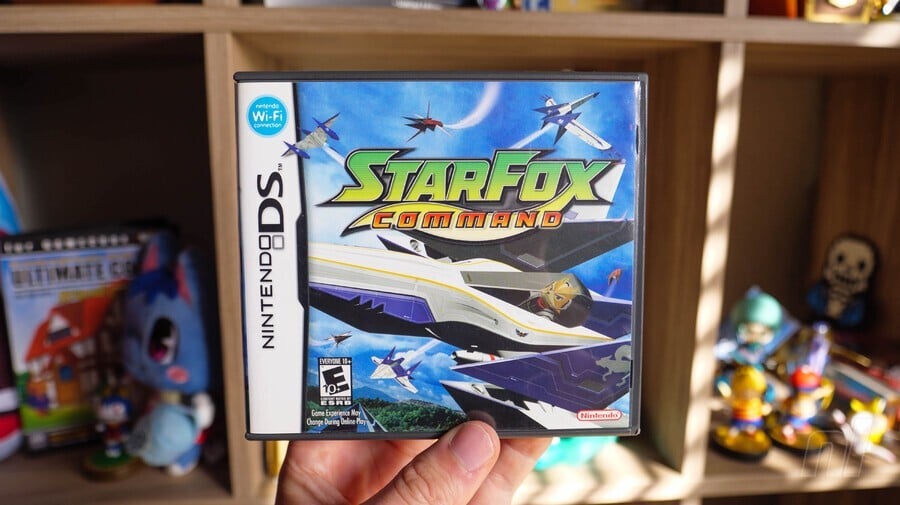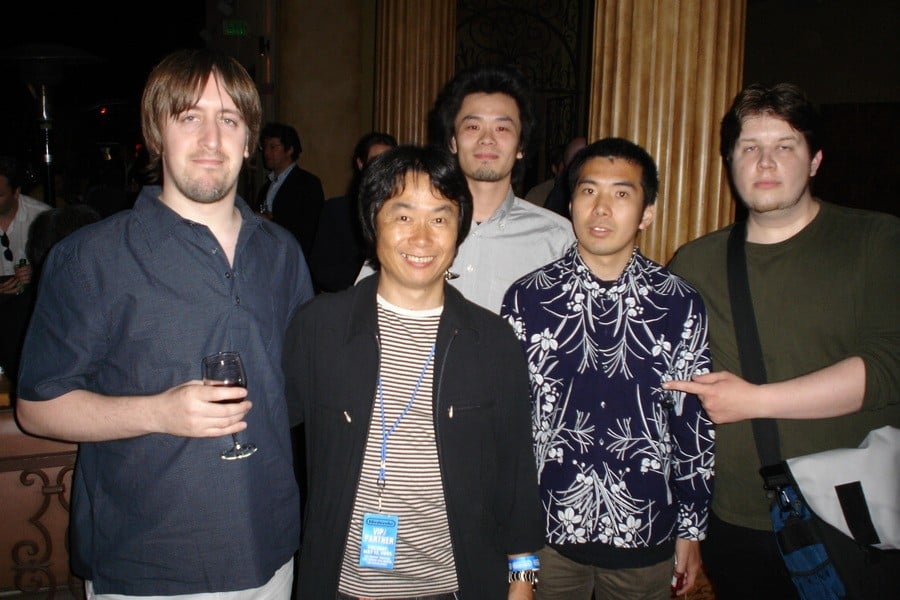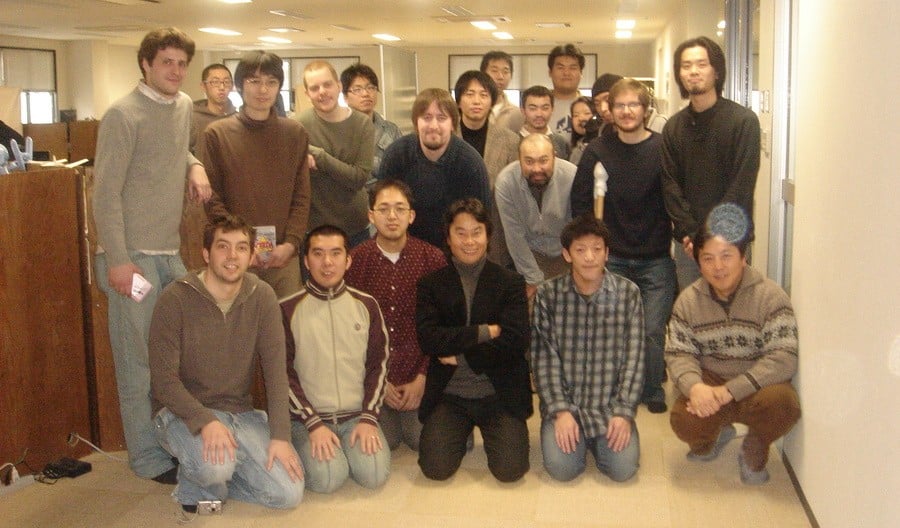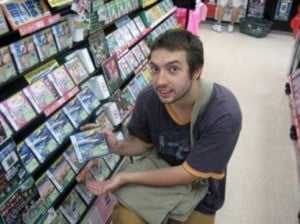
Star Fox Command is 14 years old this year, a remarkable fact when you consider that, in the time that has elapsed since its release, we’ve only seen one all-new Star Fox entry – and even that was technically a remake of the N64 title, Star Fox 64 (and don't even mention Star Fox Guard). While Nintendo’s attention is currently focused on franchises such as Animal Crossing, Zelda and (of course) Super Mario, it’s easy to forget that once upon a time, the Star Fox series was seen as a true demonstration of the potential of Nintendo’s home-grown hardware.
The original game, lest we forget, marked the start of Nintendo’s relationship with the third dimension and was powered by a revolutionary graphics chip which gave its host console, the SNES, a marked advantage over its rivals. Star Fox 64 required no additional hardware to make it sing, but rather showcased the incredible graphical prowess of the Nintendo 64 with visuals that arguably outclassed those seen on the PlayStation and Saturn. GameCube outings Star Fox Adventures and Star Fox: Assault could arguably be cited as the entries which caused the franchise’s star to falter a little; the former was an unrelated game by UK developer Rare which had the Star Fox IP forced upon it, while the latter was developed by Namco and, impressive opening level aside, was something of a disappointment thanks to its focus on ground-based missions and multiplayer.
This little history lesson hopefully gives some context to Star Fox Command’s release and the weight of expectation that rested on its diminutive shoulders. Following the misfires of Adventures and Assault, Fox’s first handheld adventure had added pressure; not only was it tasked with resorting faith in the franchise, but it was also launching on the Nintendo DS, a console that, at the time, was confounding industry expectation and introducing millions of players to the wonders of touch control.

While some fans may have felt a degree of trepidation when Star Fox Command was formally announced – especially after Nintendo had entrusted the previous titles to companies which had no prior association with the series – fears were allayed when it was confirmed that Kyoto-based Q-Games, headed by Dylan Cuthbert, would be involved. Cuthbert, as you’re probably aware, was part of the team that made the original Star Fox and its SNES-based sequel, the latter of which only saw the light of day with the release of the SNES Classic Edition in 2017.
There were also a number of fun experiments that had got canned by that point; stuff that used the Game Boy gyro, for example
Cuthbert parted company with Nintendo following the cancellation of Star Fox 2 and would join Sony America to create Blasto on the 32-bit PlayStation before returning to the company's Japanese arm, where he developed the famous “Duck in a Bath” tech demo for the as-then-unreleased PlayStation 2. After contributing to the development of the Japan-only Ape Escape 2001, he left Sony and established Q-Games Ltd. in Kyoto in September 2001 – right on Nintendo’s doorstep.
While Q-Games was always envisaged as a platform-agnostic studio, Cuthbert wasted no time in striking up a working relationship with his former employer. "We had already approached [Nintendo] for a number of experiments and games, and had already developed Digidrive / Intersect with them," he tells us. "There were also a number of fun experiments that had got canned by that point; stuff that used the Game Boy gyro, for example. Then [Shigeru] Miyamoto suggested that we do a concept demo for Star Fox on the upcoming DS, and we went away and spent a couple of months knocking up a really interesting ‘space elevator’ demo that felt just like the original Star Fox. We even totally revamped the look of the Star Fox characters and team, but that direction was dropped when we went into production and Takaya Imamura was assigned to produce the title."

Miyamoto had, of course, worked alongside Cuthbert on the canned Star Fox 2, and the legendary designer wanted that particular title to be something of a touchstone for this new entry; he knew instinctively that Cuthbert was the right man for the job. "Miyamoto suggested it to us because he wanted the ideas in Star Fox 2 explored more and, of course, I had been heavily involved in that," explains Cuthbert. "Not many other people knew anything about Star Fox 2 at that point in time! Even Imamura-san hadn’t been involved directly on Star Fox 2."
The ideas in Star Fox 2 seemed interesting to Miyamoto to apply to the Nintendo DS with its two screens
It’s tempting to ask why Miyamoto chose to adopt a slightly different play style for Star Fox Command, especially as Star Fox 2 had never been seen by the wider public and the past two titles had displeased some fans by straying too far from the original 'on-rails' formula. Cuthbert thinks that the promise of new hardware – hardware which would come to change the way we play – was one of the key reasons. "The ideas in Star Fox 2 seemed interesting to Miyamoto to apply to the Nintendo DS with its two screens. He explained early on that the Star Fox franchise wasn’t about repeating the same game in sequel after sequel, but was a vehicle for exploring ideas in 3D gaming. Just like the early experiments we did in Star Fox 2 with 3D platforming that eventually helped shape Super Mario 64, he wanted us to try out new ideas and see what happened."
It’s easy to forget just how groundbreaking the Nintendo DS was when it was first released. At the time of Star Fox Command’s development, touchscreen smartphones weren’t anywhere near as commonplace as they are now – neither were concepts such as voice commands, dual displays and wireless internet. Q-Games studio manager Takahashi Akito had joined the company fresh from university, and Star Fox Command was the first game he worked on; he recalls how the console’s innovative tech made the game a truly enticing debut project. "I remember feeling fresh and excited every day about the game design, which took advantage of the DS' unique feel of freely controlling the direction of the aircraft with the stylus, rolling with a swipe, as well as features that hadn't been seen in previous consoles."

Rhodri Broadbent was another new Q-Games hire around the same time, having joined the company from UK studio Lionhead, where he had worked on Fable. He found the process "liberating", adding that: "early on in Star Fox Command we were experimenting and prototyping a lot of ideas for game controls and cameras – some crazy, many wonderful. That period is one of the high points of my career, without question. I think it's hard to remember now how much of a shift the DS was, but we were prototyping Command before the system had launched, so in those early days our own project was the only 3D-action touch-screen dual-screen gameplay example we had! It was an 'anything goes' time and of course, a lot of great ideas had to be discarded in order to shift into production mode. I was responsible for programming the Arwing controls and I particularly liked one of those discarded modes, in which you could hold the stylus over an enemy to keep the camera locked onto it, and the Arwing would smoothly auto-pilot around it whilst you planned how to attack it, or studied the weak points. In fact, I was very pleased to see some of the things we tried out but couldn't use were incorporated in some form into Star Fox Zero."
I was very pleased to see some of the things we tried out but couldn't use were incorporated in some form into Star Fox Zero
"I especially liked using the DS Rumble Pak for haptic feedback when you drew routes through meteor fields,” Cuthbert adds. “We did iterate a lot on how to get the strategy and route creation to be as fun as possible. The sound guys at Nintendo suggested using the player’s own voice or sound, but cut up, for all the voices of the characters; because this was a smaller handheld title, it was decided by Nintendo early on we wouldn’t have the cartridge space for lots of real voice samples, unfortunately, so we found a fun technical compromise."
As is the case with many of Nintendo’s outsourced projects, there was a close relationship between Q-Games and its Kyoto neighbour. "Imamura-san was in the office every day working on it with us," remembers Cuthbert. "Miyamoto and [Katsuya] Eguchi came to visit the team, too. However, all the development work was done by Q-Games with the exception of the music and audio engine."
Broadbent recalls how regular visits from Nintendo's design talent helped subtly guide the project. "During pre-production, Nintendo was quite involved in the general direction the game was taking, providing feedback on all of the many and varied prototype control schemes we were trying out for the touch panel. During this phase, Mr. Miyamoto provided feedback on the game, and he was responsible for some of the final control ideas. Once the direction was decided and the main development got underway, the bulk of development happened at Q-Games, but it remained collaborative throughout. Alongside Dylan as director, Mr. Imamura of EAD was the game's producer, and he was at the Q-Games offices for most of the time collaborating with the team on everything from the enemy design to the game feel, to the narrative arcs. Hajime Wakai of Nintendo composed the game's music too, of course.”
That new suede smell was too much for Pooh-chan to resist, and he promptly went over to them and peed on them
A key member of the team despite hailing from outside of Q-Games' offices, Takaya Imamura had joined Nintendo in 1989 and has the likes of F-Zero, The Legend of Zelda: Majora's Mask and the original Star Fox in his list of development credits. He was unwittingly at the centre of one of the most amusing anecdotes relating to Star Fox Command’s development. "There was a funny incident involving the company mascot at the time, 'Pooh-chan', who was my pet French Bulldog who often visited the office," explains Cuthbert. "Imamura-san had bought a lovely pair of suede shoes and, because we are a shoe-less environment, he had taken them off near the front door and placed them to the side. Well, that new suede smell was too much for Pooh-chan to resist, and he promptly went over to them and peed on them! We were all very embarrassed, but Imamura-san took it well… I hope."
As you might expect of the person who created Captain Falcon, Imamura was something of a legend for many of the team’s staffers, including Q-Games Senior director and game designer Kazushi Maeta. "I had the opportunity to work next to Imamura-san, and in addition to the informative stories, I listened to him play his guitar during breaks. Also, before I joined Q-Games, Imamura-san had given me his autograph with an illustration of Slippy, and I had no idea that I would be able to work with him after he joined the company." Yutaka Kurahashi, another Q-Games staffer, also considered it to be a real honour to work with one of his heroes. "Even now, my fondest memory was working on the latest game with the developers of Star Fox, Dylan and Imamura-san – [whose game] I used to play when I was a kid. Imamura-san was very friendly and we enjoyed going out for dinner and talking about cars and other hobbies."

While the Nintendo DS broke a lot of new ground from a technical standpoint, it was the addition of online play which was perhaps the most exciting update, making Star Fox Command the first title in the franchise to make use of the incredible connective power of the internet. "Online was new territory for us, but we wanted to make it fun and give people that exciting feeling of a dogfight," explains Cuthbert. "Because the systems were quite fledgeling, this part of the game’s development took a bit longer than we expected, but we got it all working in the end. Our air conditioning broke for a few days in mid-summer while we were developing this bit, and that was pure hell, but we soldiered through it."
The online development infrastructure wasn’t as advanced as it is today, so adding multiplayer arena battles to Star Fox Command was pretty ambitious
Indeed, taking the game online gave the team some headaches that the high temperature of the office wouldn’t have helped with. "In general, the online development infrastructure wasn’t as advanced as it is today, so adding multiplayer arena battles to Star Fox Command was pretty ambitious," admits Broadbent. "I was not involved in the network coding, but I remember clearly that just the fundamentals of keeping things in sync gave a few members of the team some sleepless nights. Aside from the technical challenge, a quite common problem in flight combat games that we also faced was that it can be easy to fly past a target coming towards you before you've had a chance to shoot them. In small areas, it can feel frustrating as you both keep rotating to get your opponent back in frame. In Command though, the prominence of the map on the DS' lower screen helped to alleviate that, allowing players to plan wider approaches and clearly see the way their opponent was headed, as well as exposing the power-ups so that it wasn't simply search-and-destroy, but also about snagging the best weapons before your opponents got to them."
One of Star Fox Command’s most notable legacies today is the fact that it introduced multiple endings for the player to discover, a system which Cuthbert says he lifted from popular 'Choose Your Own Adventure' books, such as the Fighting Fantasy series. "I liked the old adventure books where you would make choices and have branching paths and different outcomes, and while we were looking for a metagame framework I suggested it to Imamura-san and he ran with it, really getting into and enjoying the creation of the narratives. I think it let him be more creative and give the character development more breathing room than they normally would get with a fixed path narrative." Multiple endings added replayability to the final game and their creation clearly gave Imamura a lot of pleasure. "I remember Imamura-san was having a blast making the endings for each route," recalls Maeta. "He said that maybe the sequel could really be one of these ending episodes." His colleague Kurahashi concurs. "Imamura-san looked like he was having a great time drawing them!"

One of the endings – dubbed "Curse of Pigma" – sees Fox McCloud down in the dumps after the loss of his beloved Krystal and taking up racing to lift his spirits, a scenario which appeared to play some part in rumours relating to a Star Fox racing title. What do the team think about Command influencing gaming gossip more than a decade later? "I have no idea about that," says Cuthbert. "But Fox and his team get everywhere! Imamura-san was behind F-Zero of course, so that particular ending with the slight cross-over of the two universes was really cool, I thought." Broadbent adds weight to this viewpoint. "That branch of Command's storyline was quite a natural outcome I think; Mr. Imamura has been heavily involved in both the Star Fox and F-Zero series throughout his career, so when he and Dylan were conjuring up an alternate timeline where Fox and Falco were driven to change careers, high-speed racing was the first choice."
I would have liked to expand the mothership sequence more too, adding variation and different things to do, allowing you to enter mothership for an on-rails sequence, perhaps
Star Fox Command launched in August 2006 to favourable reviews and reasonable sales (day one in Japan, it sold 20,000 copies), but as is the case with any game, there are elements which the team wish they could go back and change today. "If we’d have had more time, I would have liked to add some 'standard' Star Fox levels with forward-scrolling, but at the time, Miyamoto was adamant that we stick with free-range modes," says Cuthbert. "That was part of his 'Star Fox should explore new things' initial direction on the project. I would have liked to expand the mothership sequence more too, adding variation and different things to do, allowing you to enter mothership for an on-rails sequence, perhaps." Fellow Q-Games staffer Maeta reveals that the Arwing transformation that was in Star Fox 2 (and would later be resurrected in Star Fox Zero) was almost included in Command; this would certainly have given the gameplay more variety.
For Broadbent, who would go on to found Scram Kitty developer Dakko Dakko in his native UK a few years later, the game’s strategy elements would have benefitted from some more attention. "I think a deeper integration between your decisions on the strategy map and what happens in the missions would have added some extra depth and a lot of replayability. I think the strategy map is a great feature of Command, and I'd love to see it incorporated into a future Star Fox game to enable greater player choice and interaction between team members. Or perhaps a Star Fox RTS?"
What's the likelihood of Star Fox Command getting remade so that it can gain a new lease of life? Cuthbert isn’t optimistic, but stranger things have happened. “I think the chances of a remake are pretty low, although the chances of Star Fox 2 getting a release were pretty low, too! However, I would love to make a Star Fox Command 2 for Switch.”

